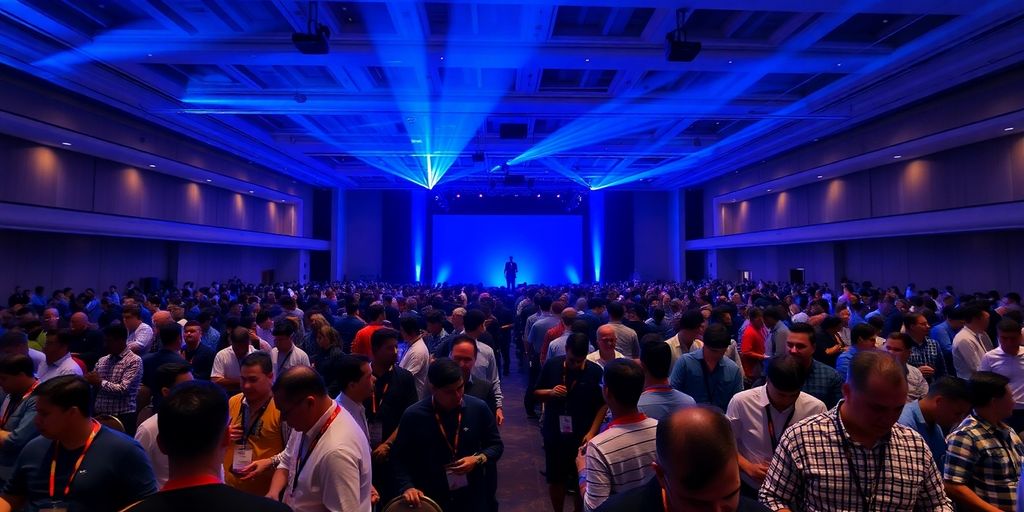This whole salesforce training thing felt like a maze at first. I tried modules on Trailhead, got a sandbox to break things, and even registered for Dreamforce—only to realize I needed a plan. So I mixed in certs, community chats, AppExchange tinkering, and a peek at the MVP program. Over time, I saw what really helped me build skills. You’ll see those seven steps in the next sections.
Okay, so you want to get good at Salesforce? Let's talk about Trailhead. It's basically Salesforce's own learning platform, and the best part? It's free. Seriously, free! You can learn all sorts of stuff, no matter if you're a total newbie or already know a thing or two. It's designed to help you build Salesforce expertise from the ground up.
Think of it like this:
Trailhead is more than just a learning tool; it's a community. You can connect with other learners, share your progress, and even earn badges to show off your skills. It's a great way to stay motivated and keep learning.
It's not just for beginners, either. Even seasoned Salesforce pros use Trailhead to stay up-to-date on the latest features and updates. It's a constant learning journey, and Trailhead is there to help you every step of the way. It's a solid foundation for anyone serious about mastering Salesforce.
Here's a quick look at some of the benefits:
| Benefit | Description THE INFORMATION CONTAINED IN THIS ARTICLE IS FOR GENERAL GUIDATIONS ONLY. IT IS NOT A SUBSTITUTE FOR PROFESSIONAL ADVICE. ALWAYS CONSULT WITH A QUALIFIED PROFESSIONAL FOR ANY QUESTIONS YOU MAY HAVE REGARDING YOUR PARTICULAR CIRCUMSTANCES.
Salesforce certifications are a big deal. They're not just pieces of paper; they show you know your stuff when it comes to Salesforce. Getting certified can really boost your career and make you more attractive to employers.
Think of it this way: Salesforce is everywhere, and companies need people who can actually use it well. A certification proves you're one of those people. It validates your knowledge and shows you're serious about working with the platform. Plus, it helps you understand Salesforce better, so you can use it more effectively.
With a Salesforce certification, you can:
Earning a Salesforce certification isn't just about passing a test. It's about demonstrating real-world skills and a commitment to mastering the platform. It shows employers that you're not just familiar with Salesforce, but that you can actually use it to solve problems and drive results.
Salesforce offers different certifications for different roles, like administrator, developer, and consultant. Each one tests your knowledge in a specific area. To prepare, you can use Salesforce training materials, take practice exams, and get hands-on experience with the platform. It's a commitment, but it's worth it if you want to take your Salesforce career to the next level. You can gain a competitive edge with a Salesforce certification.
Okay, so you've been messing around in your live Salesforce org, making changes, adding fields, and generally exploring. That's cool, but what happens when you accidentally break something? That's where the Salesforce Sandbox comes in super handy. Think of it as your own personal playground where you can experiment without the fear of messing up your actual, live Salesforce data. It's like a practice run before the big show.
A Salesforce Sandbox is a copy of your production environment, allowing you to test new features, integrations, and customizations in a safe space.
It's not just for avoiding disasters, though. Sandboxes are great for training new users, developing custom applications, and generally getting comfortable with the platform. You can try out different configurations, see how they work, and then implement the successful ones in your live environment. It's a total game-changer for anyone serious about getting the most out of Salesforce. You can even use it to practice with Salesforce Flow Course.
Here's a few things you can do in a sandbox:
Using a sandbox is like having a safety net. It allows you to explore the full potential of Salesforce without the risk of disrupting your business operations. It's a must-have for any serious Salesforce user.
There are different types of sandboxes, each with its own storage limits and refresh intervals. Here's a quick rundown:
Choosing the right type of sandbox depends on your needs. If you're just starting out, a Developer sandbox might be enough. But if you're working on a major project, you'll probably want a Full sandbox. Just remember to refresh your sandbox regularly to keep it in sync with your production environment. It's a small step that can save you a lot of headaches down the road.
The Trailblazer Community is like the water cooler of the Salesforce world. It's where people using Salesforce – admins, developers, marketers, sales folks, you name it – hang out, ask questions, and share what they've learned. It's a great place to get help when you're stuck, but it's also a fantastic way to build your network and learn about new features or best practices. Think of it as your go-to resource for all things Salesforce, powered by the collective knowledge of thousands of users.
It's not just about asking for help, though. Contributing to the community is a great way to solidify your own understanding and build your reputation. The more you help others, the more you learn, and the more people will recognize you as someone who knows their stuff. Plus, it just feels good to give back!
Getting involved in the Trailblazer Community is one of the best things you can do for your Salesforce career. It's a place to learn, grow, and connect with others who are passionate about the platform. Don't be afraid to jump in and start participating!
Here are a few ways to get involved:

Dreamforce is like the Super Bowl for Salesforce enthusiasts. It's a massive annual event that brings together people from all over the world to learn, network, and get inspired. Think of it as a giant family reunion, but instead of awkward small talk, you're geeking out over the latest Salesforce features. It's the ultimate place to immerse yourself in the Salesforce ecosystem.
Dreamforce can be overwhelming, but it's also an incredible opportunity to learn from experts, connect with peers, and get a glimpse into the future of Salesforce. Plan your sessions in advance, wear comfortable shoes, and be prepared to soak it all in.
It's not just about sitting in sessions all day, though. There are parties, concerts, and even opportunities to give back to the community. It's a unique blend of learning and fun that you won't find anywhere else. Plus, you might even run into Marc Benioff! It's a great place to learn about Salesforce optimization.

The Salesforce AppExchange is like a giant app store, but specifically for Salesforce. Think of it as a marketplace where you can find pre-built apps and components to extend the functionality of your Salesforce org. It's a great way to avoid building everything from scratch and to quickly add features that meet your specific business needs. I remember when I needed a better way to manage project timelines within Salesforce, and I found a perfect app on the AppExchange that saved me weeks of development time.
The AppExchange offers solutions for just about every department and industry.
It's not just apps, either. You can also find consultants who can help you with your Salesforce implementation, as well as components like Lightning Web Components that you can add to your pages. It's a really powerful resource for anyone using Salesforce.
The AppExchange is a treasure trove of solutions, but it's important to do your research before installing anything. Read reviews, check the developer's reputation, and make sure the app is compatible with your Salesforce setup. It's also a good idea to test apps in a Salesforce Sandbox environment before deploying them to your production org.
Here's a quick rundown of why the AppExchange is so useful:
Okay, so you've been crushing it with Salesforce, maybe even thinking about the next level. Ever heard of the Salesforce MVP program? It's kind of a big deal. Basically, it's Salesforce's way of recognizing people who are super passionate and knowledgeable about their platform, and who actively share that knowledge with the community. It's not just about knowing Salesforce inside and out; it's about helping others do the same.
Becoming a Salesforce MVP isn't just about what you know, but what you share.
Think of it as a reward for being awesome and helpful. But how do you actually become one? It's not like there's a secret handshake or anything. It's more about consistently contributing to the Salesforce community in meaningful ways. Let's break it down a bit:
Being a Salesforce MVP is more than just a title; it's a commitment to helping others succeed with Salesforce. It's about being a leader, a mentor, and a resource for the community. It's a way to give back and make a real difference in the lives of others.
It's a pretty cool program, and it's a great way to get recognized for your hard work and dedication to the Salesforce ecosystem. Plus, you get access to some pretty sweet perks, like exclusive events and opportunities to connect with other MVPs and Salesforce executives. So, if you're passionate about Salesforce and love helping others, definitely consider striving to become an MVP. It's a challenging but rewarding goal that can take your Salesforce career to the next level. And who knows, maybe I'll see you at the next MVP event!
So there you have it—a simple mix of hands-on work, community chats, staying in the loop, thinking about real business needs, brushing up on people skills, looking beyond the usual training, and finding guides to learn faster. It might seem like a lot at first. Just pick one strategy, give it a try, and watch how it clicks in your daily work. Then move on to the next. Keep poking around, ask questions, and share what you find. Before you know it, you’ll look back and realize how far you’ve come. Ready to jump in? Let’s do this.
Salesforce Trailhead is a free online learning platform where you can earn badges and modules to learn Salesforce skills.
Just sign up for a free account on trailhead.salesforce.com, pick a trail, and begin the hands-on challenges.
Yes. All Trailhead content, including badges, modules, and projects, is free for anyone to use.
Most badges take 30–60 minutes. You can learn at your own pace and revisit lessons anytime.
Yes. Trailhead has exam guides, practice questions, and hands-on projects that match certification topics.
You can ask questions in the Trailblazer Community Forums or search the Trailhead Help Center for tips.
We’ll help you streamline your CRM, automate outreach, and launch faster. Whether you're starting from scratch or improving what you have, we reduce tech debt and grow your pipeline.
.avif)
.avif)
.avif)
.avif)
.avif)
.avif)